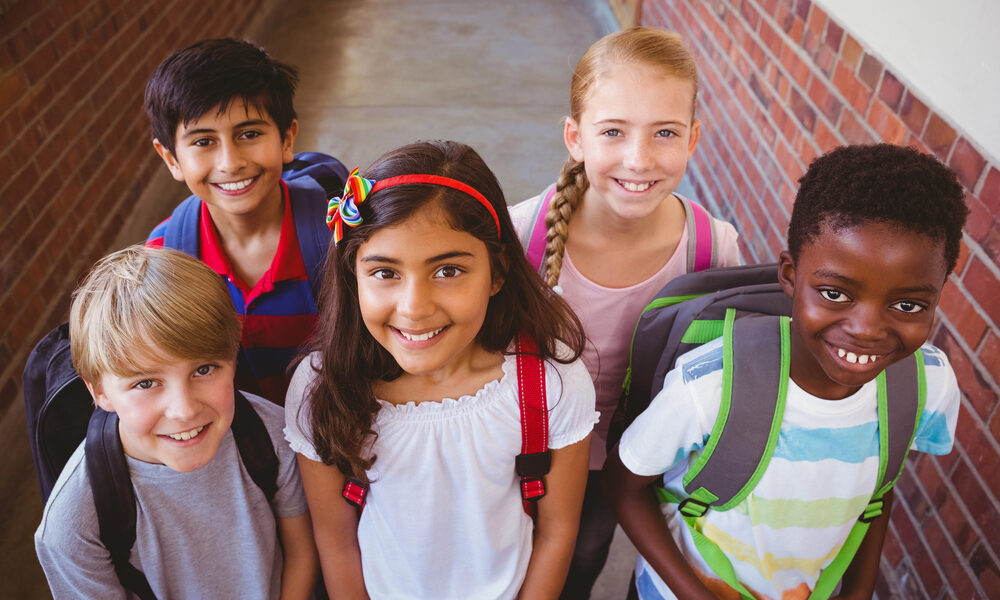Choosing the right school isn’t just about academics anymore. In today’s world, student health and safety are top concerns for parents—and for good reason. From physical security to emotional well-being, families are seeking campuses that go beyond the basics to ensure students feel protected and supported every day.
According to the National Center for Education Statistics, about 75% of public schools reported one or more violent incidents during the 2019–2020 school year, and over 93% of schools now use security cameras as part of their safety protocols. But cameras aren’t the only measure to look for. Here’s what really matters when evaluating how seriously a school takes student health and security.
A Clear, Transparent Safety Policy
First things first—look for a school that clearly communicates its safety policies and protocols. You should be able to find information on their website, in their parent handbook, or by simply asking the administration.
Key policies that indicate a strong commitment to student safety:
- Regular emergency drills (fire, lockdown, severe weather)
- Clear visitor check-in/check-out procedures
- Background checks for all staff and volunteers
- Defined crisis response plans and parent communication strategies
- Mental health support protocols and anti-bullying policies
Transparency signals that the school takes these issues seriously—not just on paper, but in practice.
Modern Tech That Supports Safety
Gone are the days when locking the front door was enough. Today’s schools need to integrate modern tools to address evolving safety concerns. Technology plays a huge role in not just responding to emergencies, but preventing them in the first place.
Look for features like:
- Secure entrances with badge access or buzzer systems
- Security cameras that monitor key areas without invading student privacy
- Real-time communication apps for staff and emergency alerts
- A reliable school safety sensor system that can detect vaping, air quality changes, or suspicious activity in restrooms and other overlooked areas
Sensors like these are especially valuable because they provide non-invasive monitoring that can alert administrators to early signs of risky behavior—allowing them to act before something escalates.
Health-Focused Infrastructure and Programs
Physical health is a vital part of safety, especially in light of public health challenges in recent years. Parents should look at how a school manages cleanliness, air circulation, and access to health services.
Health-focused indicators to look for:
- Clean, well-ventilated classrooms with regular maintenance
- On-site nurse or access to medical professionals
- Mental health services, counseling, or wellness programs
- Healthy meal options and clean water access
- Policies for managing contagious illnesses and student hygiene
Some schools also offer yoga, mindfulness programs, or outdoor learning options to promote mental and physical well-being during the school day.
Strong Staff Training and Engagement
A well-trained, engaged staff is one of the most powerful safety tools a school can have. Teachers, custodians, aides, and administrators are the eyes and ears of the building. Their ability to respond calmly and effectively in difficult moments can make all the difference.
Ask about:
- Ongoing professional development on safety and mental health
- Staff training in CPR, first aid, and emergency response
- Clear procedures for identifying and reporting behavioral concerns
- Programs that encourage positive relationships between students and staff
When adults in the school are well-prepared and connected to the student body, it creates a stronger culture of safety and accountability.
A Positive, Inclusive School Culture
Emotional safety matters just as much as physical security. Students who feel valued, respected, and included are less likely to engage in risky behavior and more likely to thrive academically and socially. The right school creates an environment where all kids feel like they belong.
Signs of a healthy school culture:
- Anti-bullying initiatives with real follow-through
- Peer mentoring programs or student leadership groups
- Diversity, equity, and inclusion efforts that go beyond buzzwords
- Open communication between staff, students, and families
- Opportunities for community-building events and celebrations
Take note of how students interact with each other—and with staff—during your school visit. Are they engaged, respectful, and comfortable? That says more than any brochure can.
Parent Involvement and Communication
Finally, schools that prioritize health and security also value strong relationships with families. Parents shouldn’t be kept in the dark when it comes to safety matters—and they shouldn’t have to fight to be heard.
Look for:
- Regular updates through newsletters, apps, or email
- A clear point of contact for safety concerns
- Opportunities for parents to serve on committees or volunteer
- Prompt communication when issues arise
- Transparency around incidents and how they were handled
A school that welcomes parent involvement sends the message: “We’re in this together.”
Final Thoughts
There’s no such thing as a perfect school, but there are schools that put genuine effort into keeping students safe, healthy, and supported. From transparent policies to advanced tools like a school safety sensor, these details add up to a learning environment where kids can focus on what matters most—growing, learning, and feeling like they belong.
As a parent, asking the right questions and trusting your gut during school tours can help you make the best decision. Because when a school truly prioritizes student health and safety, it shows—in every hallway, classroom, and conversation.

